John Hurrell – 23 August, 2024
By pondering Gatt's shrewd selection of fourteen works, we might ask ourselves: is it the quality of a sound's texture that each work theoretically initially provides, that is the point? Or is it the quality of the context ensconced around the source of that sonic tactility? A variety of generating scenarios-from a dozen energetic artists prone to experimentation—are on show: ‘pitched' to listeners hopefully endowed with curiosity.
Titirangi
Lauren Brincat, Mary-Louise Browne, Phil Dadson, Julian Dashper, John Nixon, Oscar Enberg, Sriwhana Spong, Michael Parekōwhai, Dane Mitchell, Angelica Mesiti, Marco Fusinato, Michael Stevenson (with Rohan Drape, Neil Kelly, and Danius Kesminus)
Milkstars: Sound Constellations in the Chartwell Collection
Curated by James Gatt
17 August - 20 October 2024
This Te Uru show, put together by the new curator, looks at the trans-Tasman friendship of John Nixon and Julian Dashper and other artists brought into the Dashper-Nixon orbit, while also pointing out the multi-layered efficacy of ‘sound’ as a bonding interest and guiding thematic concept.
As a bodily phenomenon, sound does not have to always be present literally, for it can be mentally evoked by visual means, presenting for sight, for example, the mechanics of generating aesthetically interesting sonic waves (Spong, Parekōwhai, Dashper, Nixon, Dadson), or sound tropes, or coded symbolic conventions (Enberg, Fusinato), or using descriptive language (Browne). Or spotlighting its transmission through a physical conduit (Enberg, Mitchell, Spong, Dadson).
By pondering Gatt’s shrewd selection of fourteen works, we might ask ourselves: is it the quality of a sound’s texture that each work theoretically initially provides, that is the point? Or is it the quality of the context ensconced around the source of that sonic tactility? A variety of generating scenarios-from a dozen energetic artists prone to experimentation—are on show: ‘pitched’ to listeners hopefully endowed with curiosity.
And yet many of the picked items don’t involve sound as an experience at all, only a conventional coded notation, visual metaphor or symbol for aural sensation. Let’s say mentally generated sound: not physical. For despite expectations, and the use of a couple of headphones, they are exceedingly visual.
Some (like the key works by Nixon and Dashper, for example, placed next door to the upstairs ‘dome’ room) are clever blends of musical instrument and painting conventions: revelling in analogy; another like that of Spong, is a rarefied mechanical innovation that by doubling, deepens the timbre of a percussive instrument.
Others, like the cans and string ‘phone’ by Dane Mitchell, designed via its string length to link Mitchell’s dealer to Auckland Art Gallery, are brilliantly witty in their use of materials. Mary-Louise Browne’s painting on leather of the words ‘soft ears’ jokes about our hearing appendages as if the painting were itself a body part we can whisper into.
Oscar Enberg’s extraordinary installation, Imagination Dead Imagine (lilt for tenor and Jean Arp electric guitar), evokes multiple instruments and arabesque smithy implements, with implied ‘sonic’ juxtapositions and gleeful visual incongruity. It could also be a score in its own right.
In her video, Angelica Mesiti films two household removal experts lugging a ‘prepared’ piano up a winding staircase, with unusual sonic consequences, while below, around the corner in the gallery, a robotic player piano organised by Michael Stevenson and friends madly rattles off an unpredictable medley of frenetic tunes.
In an unexpected way this show is a curated look at the avant-garde, where listening pleasure (so hard to define for sure) is not on the agenda, but very often humour is. Or the nuts and bolts of social connectivity. Dashper and Nixon’s displayed polycarbonate discs for example would very rarely get listened to. Their recording ethos is that of a conceptual gesture: objects that are politically driven, to create impact by merely existing—circulated amongst friends as conceptual sculptures—but not really intended to be functional.
However—to risk contradicting myself—is the Chartwell Collection (built up carefully by Rob and Sue Gardiner for fifty years now) an avant-garde anthology? No, it focusses on the experimental, perhaps ‘fringe’, but (as I’ve shown) is not intended to be confrontational in the heavy sense of calculatedly arousing heightened anger. It is not specifically provocative or incendiary. Or baiting. Though in its approach to radically expanding or testing notions of consumer taste, it might inadvertently infuriate. Rather it is meant to puzzle, and spark off through each of its numerous generated encounters, an enriching creative investigation.
John Hurrell
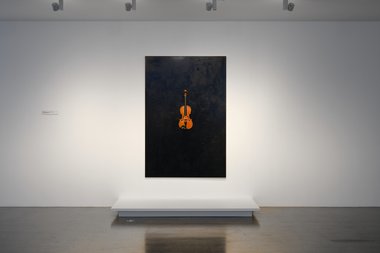
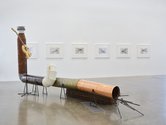
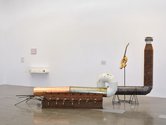
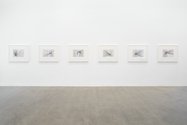
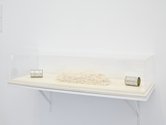
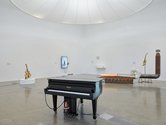






 Two Rooms presents a program of residencies and projects
Two Rooms presents a program of residencies and projects Advertising in this column
Advertising in this column



This Discussion has 0 comments.
Comment
Participate
Register to Participate.
Sign in
Sign in to an existing account.